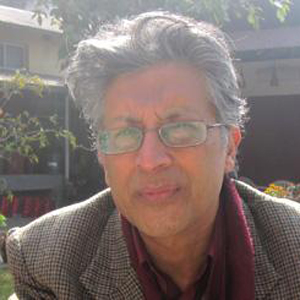Opinion
Overseas employment is leading to labour market distortions
Shortage of labour has led to an increase in wage levels over minimum wage.
Narayan Manandhar
Compared to two earlier labour force surveys (1998-99 and 2008), the new labour force survey (2017-18) revealed the unemployment situation in the country to be at a staggeringly higher rate. The unemployment rate is estimated to be 11.4 percent. In terms of an absolute figure, this amounts to slightly more than 900,000 capable Nepali people seeking jobs but not finding any.
In the two earlier surveys, the unemployment rates were found to be 1.8 percent and 2.1 percent respectively. A brief controversy arose over Nepal having low unemployment rates when other surveys revealed higher rates. Earlier, attempts were made in the survey reports to adjust unemployment figures. Obviously, one needs to look up a nuanced definition of unemployment before making any conclusions. For a developing country like Nepal, where people cannot go on the dole, it is not unemployment rates per se, but underemployment or underutilisation of labour that has to be looked into. Again, the figures are even more astounding here. The underemployment rates range from 19.6 to 39.3 percent, depending on how you define underemployment.
During the recently concluded elections in India, voters raised a hue and cry over findings that the unemployment rate was 6.1 percent. This rate is supposed to be the highest in 45 years in India. By and large, when it comes to figures, Nepali politicians and policymakers take a relaxed attitude. Who cares if it is 2 percent or 11 percent?
It is one thing to say 'prosperous Nepal and happy Nepali' and something totally different when you observe the reality. All the three classical factors of production—namely land, labour and capital—are on the wane. The only comment necessary to make on land is that it cannot move even though it can change hands. However, the other two, namely capital and labour, are clearly on move. There is capital flight from the country, and whatever capital is coming in is also dubious. The country is now a haven for the money laundering business. What about labour?
Labour as capital
As per the new measure of national wealth—defined as per capita wealth composed of natural capital (land, forest), produced wealth (buildings, factories) and human capital (number, talent, and the skill of the workforce)—Nepal’s primary source of capital is its people. In 2014, nearly 45 percent of Nepal’s wealth constituted human capital. The other two components—namely natural capital and produced capital—constituted 39 and 16 percent respectively. These three measures can be used as a proxy measure for the classical factors of production.
Unemployment and underemployment are the only one indicator of labour market distortion, that is a mismatch between demand and supply of labour in Nepal. The business of foreign employment—the modern-day avatar of Gurkha recruitment—has come as a short-term gain for long-term pain in the economy. Now, the economy is virtually dependent on remittances. Similar to Gurkha recruitment, we have not been able to conceive a definite national policy on the business of foreign employment. Is it good or bad for the economy? No one is sure.
Due to the business of foreign employment, local industrialists are increasingly facing labour shortages. This is being substituted by imported labour. Yet, a fraction of the civil society movement is raising a hue and cry over voting rights for migrant Nepali workers and the selling of citizenship certificates to non-Nepali workers. The country is living in a kind of paradox. You speak of Gurkha bravery and are very much aware that it is poverty that has driven poor Nepalis to join foreign security forces. You speak of dual citizenship rights for non-resident Nepalis (they represent capital rather than labour) but are indeterminate about voting rights for millions of Nepalis working abroad. In fact, there is no data about how many people are currently working abroad. It seems that politicians are happy to let people go abroad. Literally, you get rid of dissenting voices.
Minimum vs average wage
In the past, average wages used to hover around the statutorily determined minimum wages. The causality may be going both ways, that is, minimum wages helping to determine average wages, and average wages helping to determine minimum wages. Unlike in the past when there was close proximity between the two, today there is a significant divergence. The difference is more than Rs4,000. Theoretically speaking, this is a better situation than what is revealed by the two earlier surveys. Minimum wages are statutorily determined threshold level wages where employers are supposed to pay wages 'over and above' this minimum level.
What is important is to understand the labour market dynamics that have made average wages diverge so much from minimum wages in 2017-18. This reflects a shortage of labour in the economy (another paradox amid an 11.4 percent unemployment rate) primarily due to overseas employment leading to the bargaining power of the workers (and also the unions) to increase wages. The increased wage level, in the long run, will push employers to adopt capital intensive measures and better manage the labour force. This is good as well as bad news for the economy. This is good in the sense that it will increase productivity, and bad in the sense that it will further push up unemployment rates.
Manandhar is a freelance management consultant.




 17.12°C Kathmandu
17.12°C Kathmandu









%20(1).jpg&w=300&height=200)

